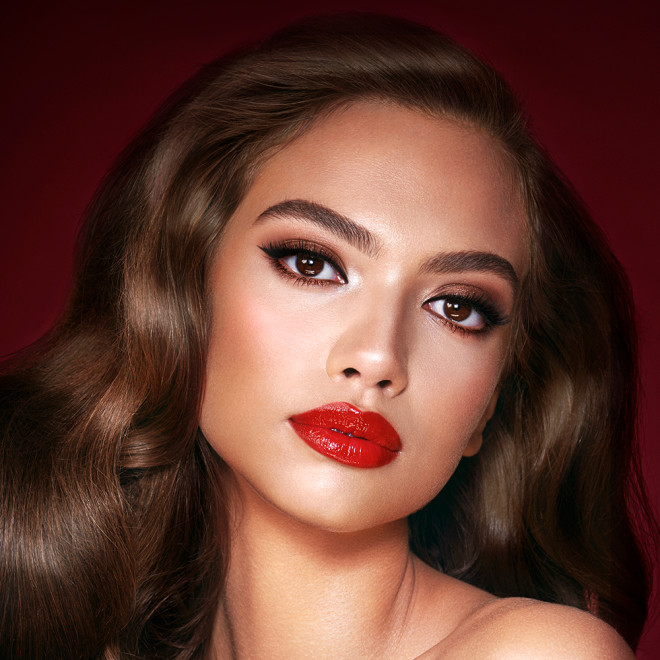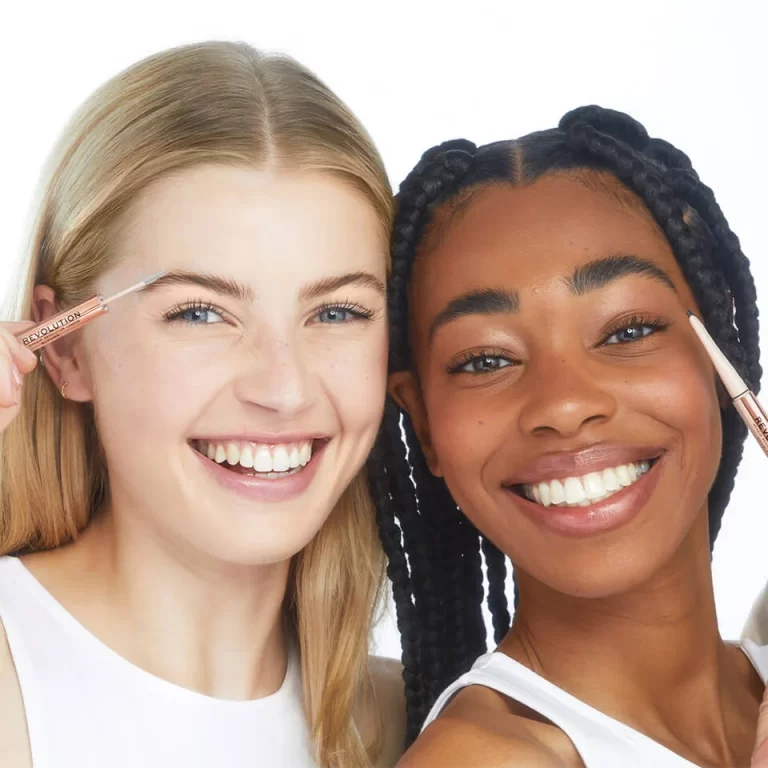
Mastering Concealer Timing: When to Apply for Flawless Makeup
The Role of Foundation in Your Makeup Routine
Foundation serves as the initial step in a successful makeup application process. It acts like a canvas for the rest of your makeup, helping to create a smooth and uniform surface on your skin. Using foundation can effectively even out skin tone and provide a base that enhances the effectiveness of products applied on top, such as concealer and blush.
Types of Foundation and Their Benefits
There are several types of foundations, each offering unique benefits. Liquid foundations are popular for their ease of application and ability to provide a range of coverage from light to full, making them suitable for covering blemishes and evening out complexion. Powder foundations are best for oily skin types as they help absorb excess oil and can create a matte finish. Stick foundations offer convenience and portability, perfect for touch-ups on the go. Each type of foundation has specific advantages, so choosing the right one can elevate your makeup routine significantly.

Understanding Concealer and Its Uses
Concealer is more than just a makeup add-on; it’s a key player in achieving a flawless look. Unlike foundation, which covers larger areas, concealer focuses on specific problems. It addresses dark circles, age spots, and blemishes. The right concealer can brighten your eyes and give life to your overall complexion.
The Power of Concealer When Used Alone
Sometimes, less is more, especially with makeup. Using concealer alone can work wonders. For minor imperfections or a natural look, skip foundation. A small amount of concealer can cover redness or dark spots effectively. This method is perfect for those who prefer minimal makeup or are on the go. Remember, the key is to blend well for a seamless finish.
Decoding the Foundation and Concealer Relationship
Understanding when and how to use foundation and concealer is pivotal in achieving flawless makeup. These two products, while sometimes used interchangeably, have distinct purposes and can vastly impact the final look.
How to Determine When You Need Both
Everyone’s skin is unique, which means the use of foundation and concealer varies per individual. Here are a few situations that illustrate when it might be beneficial to use both products:
- Uneven Skin Tone: If you’re dealing with significant discoloration or uneven skin tone, a foundation offers a base layer of color correction, while a concealer can be applied to target more stubborn spots or under-eye circles.
- Long-lasting Coverage: For makeup that needs to withstand long hours, layering foundation and concealer can provide extra durability and prevent your makeup from wearing off too quickly.
- Photo-Ready Finish: When preparing for a photo shoot or a special event where photography is involved, using both can help achieve a more polished and refined look that stands out well in pictures.
- Detailed Corrections: If there are specific areas that need attention, such as blemishes or scars, foundation gives an overall smooth appearance, and concealer can be applied directly to these spots for enhanced coverage.
It’s crucial to recognize the roles of each product to utilize them effectively. By understanding your skin’s needs, you can make informed decisions on when and how to use foundation and concealer for your desired makeup outcomes.

Concealer Application Techniques for Best Results
Blending is key to flawless concealer application. Use a damp beauty sponge or a concealer brush for precise application. Tap gently to merge concealer with your skin, avoiding harsh lines. Aim for a natural transition from concealed areas to the rest of your face.
For covering dark circles, apply concealer in an inverted triangle under the eyes. This brightens the whole eye area, not just the dark part. When covering pimples or discoloration, choose a concealer with a thick consistency. Dab on the spot, blend edges, and set with a light powder to prevent caking.
Remember to apply concealer after foundation. This ensures you use less product. The foundation provides an initial even layer, and concealer then targets specific imperfections more effectively.
Tips for Avoiding Patchy Makeup Through the Day
To avoid patchy concealer and foundation, prepare your skin well. Cleanse and moisturize your skin before makeup. Let the moisturizer absorb for a few minutes. Using a primer can also help create a smooth base and extend the life of your makeup.
Throughout the day, avoid touching your face. This reduces the risk of smudging your makeup. If your skin is oily, blotting papers can help remove excess oil without disturbing your makeup.
Choose long-lasting makeup products, especially if you have a long day ahead. Set your makeup with a setting spray, it will help everything stay in place and reduce the need for touch-ups.
By practicing these tips and choosing suitable products, you can achieve lasting, flawless makeup that resists becoming patchy as the day progresses.
How to Choose the Right Concealer for Your Skin
Choosing the right concealer is like finding the perfect pair of shoes. It must match your skin in tone and texture. Here’s how you can make sure you pick the right one for you.
Considering Skin Tone and Texture
First, look at your skin tone. If your concealer is too light or dark, it will stick out, not blend in. Always test different shades. Find one that disappears into your skin. This is your match.
Then, think about your skin’s texture. Is it dry, oily, or a mix of both? Pick a concealer for your type. If you have dry skin, seek creamy formulas. They will not cling to dry patches. For oily skin, search for a matte concealer. It will help control shine.
Also, note where you will use the concealer. Use a thinner, lighter concealer for under your eyes. Use a thicker one for blemishes or scars.
To sum up, match your skin tone, consider texture, and pick the right type for the area you’re covering. This way, your concealer will look natural and give you the coverage you need.

Expert Makeup Artist Advice: Concealer Application
When applying concealer, timing is crucial for an impeccable finish. Expert makeup artist Carolina Pizarro offers insights into her professional approach. Here are her tips to master the art of concealer application.
Insights from Carolina Pizarro on Timing and Technique
Carolina Pizarro suggests assessing your skin before reaching for concealer. Ask yourself, do you need to cover dark spots or improve texture? Your goal shapes your approach. For a more natural look, concealer might be all you need. Focus on technique for best results. She recommends applying concealer after foundation. This helps you use less and get targeted coverage.
Blend with the right tools. Use a damp sponge or a brush for precision. Gentle taps blend concealers seamlessly. For dark circles, go for the inverted triangle method. It brightens your entire eye area. When covering blemishes, opt for a thick concealer. Dab it on spots and blend the edges well.
Set your concealers with a light powder. This prevents it from getting cakey. Also, avoiding heavy layers between foundation and concealers keeps makeup fresh. Pizarro’s advice underlines the balance between when to apply and how to use concealers for a flawless look.
Common Mistakes to Avoid with Concealer and Foundation
Navigating the world of makeup can be tricky, and even small missteps with concealer and foundation can affect your overall look. It’s essential to steer clear of common errors to maintain a flawless finish.
Missteps that Lead to Unwanted Makeup Outcomes
To help you refine your makeup routine, avoid these frequent mistakes:
- Wrong Shade Selection: Using a concealers or foundation that doesn’t match your skin tone will stand out rather than blend in.
- Over-Application: Piling on too much product can create a heavy, cakey look. Less is often more, particularly with concealer.
- Poor Blending: Failing to blend properly can leave visible lines and marks. Invest time in blending for a seamless finish.
- Skipping Skin Prep: Neglecting to cleanse and moisturize your skin before applying makeup can lead to uneven application and reduced wear time.
- Ignoring Skin Type: Not considering whether your skin is oily, dry, or combination when choosing products will impact their performance.
- Wrong Order of Application: Applying concealer before foundation can result in using more product than necessary. Always apply foundation first, then concealer.
- Neglecting to Set Makeup: Skipping the setting powder or spray step can cause makeup to shift and wear off prematurely.
- Not Updating Makeup for Seasons: Your skin tone can change with the seasons, and so should your makeup shades.
By avoiding these mistakes and using ‘when do you put concealers on’ knowledgeably, you’ll enhance your makeup’s longevity and appearance. Each step, when executed correctly, contributes to a more polished and radiant complexion.

Maximizing The Effect of Concealer in Your Beauty Regimen
To get the most out of your concealers, tailor its use to your makeup goals. A concealers does more than cover up. It can highlight features and shape your face. Here’s how to amplify its effects.
Strategic Approaches for Enhanced Makeup Longevity
For makeup that lasts, it’s all about how you apply. Start with a clean, moisturized face. Concealers grips better on hydrated skin. Apply foundation first; it sets the stage for your concealers. Use concealers sparingly; too much can crease. Pat don’t rub, to blend. Lock in your look with a light dusting of powder or a setting spray. Keep these steps in mind for makeup that stays fresh all day.

